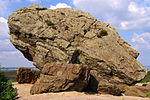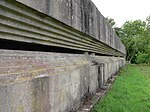Studland and Godlingston Heath National Nature Reserve
Heaths of the United KingdomNational nature reserves in EnglandSites of Special Scientific Interest in Dorset

The Studland and Godlingston Heaths NNR is located on the Isle of Purbeck in the English county of Dorset. It borders Studland Bay on the south side of Poole Harbour, between the settlements of Swanage and Sandbanks. Extending to 631ha, it is owned and managed by the National Trust following the Bankes bequest of the Kingston Lacy estate. Studland & Godlingston Heath is designated as one of only 35 "spotlight reserves" in England by Natural England in the list of national nature reserves in England and is listed as a Site of Special Scientific Interest (SSSI).
Excerpt from the Wikipedia article Studland and Godlingston Heath National Nature Reserve (License: CC BY-SA 3.0, Authors, Images).Studland and Godlingston Heath National Nature Reserve
Ferry Road,
Geographical coordinates (GPS) Address Nearby Places Show on map
Geographical coordinates (GPS)
| Latitude | Longitude |
|---|---|
| N 50.655 ° | E -1.961 ° |
Address
Ferry Road
Ferry Road
BH19 3AH , Studland
England, United Kingdom
Open on Google Maps










